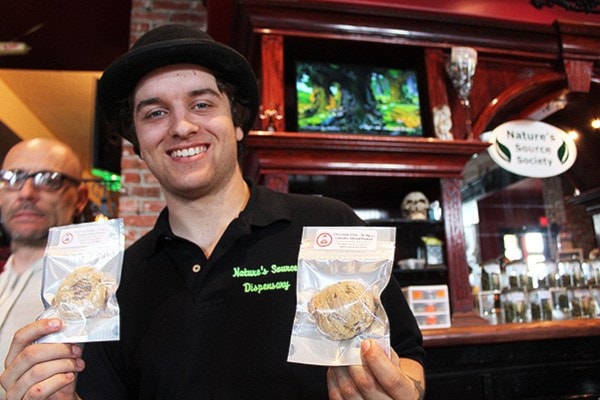Picture your favourite warm, moist cinnamon bun, stuffed with plump, sweet raisins and dripping with sublime cream cheese icing.
Who could resist, right?
Now picture it packed full of potent THC.
To some it might be the ultimate dessert, but to Steve Arnett it is cause for concern.
Arnett is the executive director of Nanaimo Youth Services, a social service agency for mid-Island youth. He is worried that the looming legalization of marijuana is going to open the door to more Vancouver Islanders ingesting pot at an increasingly young age.
And he wants to make sure steps are taken that the new law comes with solid regulation and education components that protect young people from any potential harmful effects.
“There are always unintended consequences,” he said. “That’s the piece we really have to wrap our heads around.”
Arnett wants it made clear he’s not going all Reefer Madness here. Rather than making a moral argument on marijuana use, he is simply pointing out how legalization may create some issues, and communities need to be prepared.
At the extreme end of his concern is an increased possibility of very young children ingesting marijuana. While the likelihood of little Susie snacking on some dried cannabis found in Dad’s sock drawer is slim, chances that she may gobble up those gooey brownies left on the counter are considerably higher.
Pot-related calls to poison-control centres spiked in both Washington and Colorado after marijuana legalization in each of those states, with calls regarding pre-teens nearly doubling.
Meanwhile, Arnett said kids higher up the age scale, who find smoking repellant, could see eating cookies and brownies as a lot more enticing.
“The threat is in how benign it will appear,” Arnett said. “An adult making an informed choice is one thing. An unformed vulnerable child or youth is a different animal. Access is going to be an issue.”
He points to the proliferation of things like pot cookbooks as the type of marketing that is sure to increase with legalization.
The solution is enforcing industry standards that control how marijuana is sold clearly inform that public about what they are ingesting. This could include tests that accurately determine THC content of any marijuana product, and packaging that warns consumers of the potential effects. Marketing and packaging aimed at informing parents and protecting children could be part of that.
Lorne Hildebrand, executive director of Nanaimo’s Edgewood Treatment Centre shares those concerns about edibles being marketed to a younger consumer. He said studies indicate that the developing brain is the most vulnerable to any type of psychoactive substance.
“Firstly I’m glad that someone isn’t smoking it but the part that I don’t like is edibles make it an even broader reach. They are aimed at kids more. I think we need to be careful of this. This is just people trying to make money from selling a drug. That’s all it is,” he said.
Hildebrand also is concerned the current hype about pot may minimize the fact that it can be addictive.
“It’s not this evil thing that will turn everybody into an addict. But there are certainly issues we need to be talking about when we legalize it,” he said.
Arnett points to the professional way pot is processed and packaged at the licensed Tilray medical marijuana facility in Nanaimo as the industry standard and thinks the same level of care and attention should be in place as the community takes the next step.
“I just think we should be thoughtful. This is a huge change in social policy,” he said. “There is not going to be a 100 per cent safeguard. I’m OK with 95 per cent.”
— with a file from Aaron Hinks



